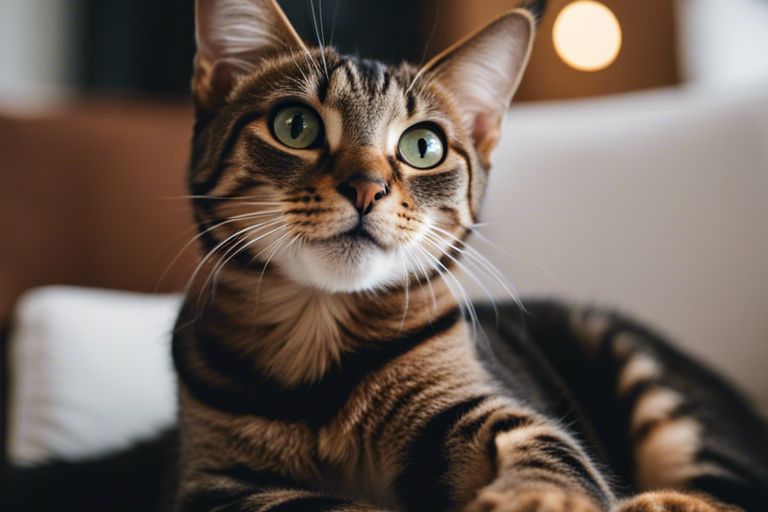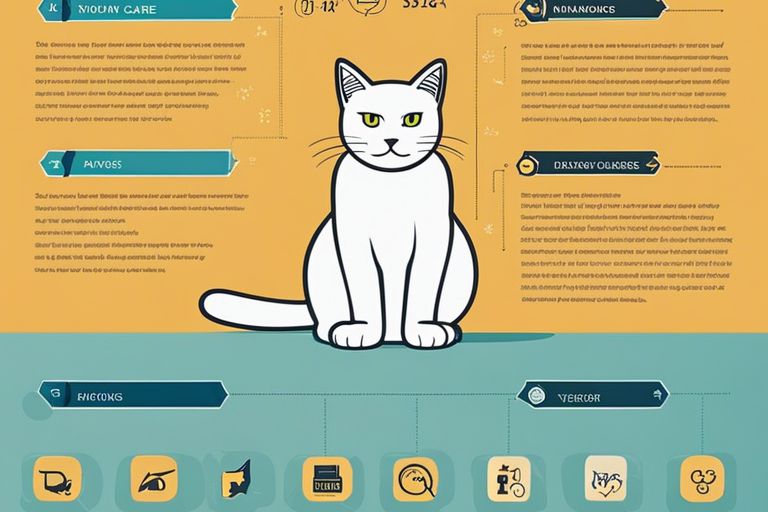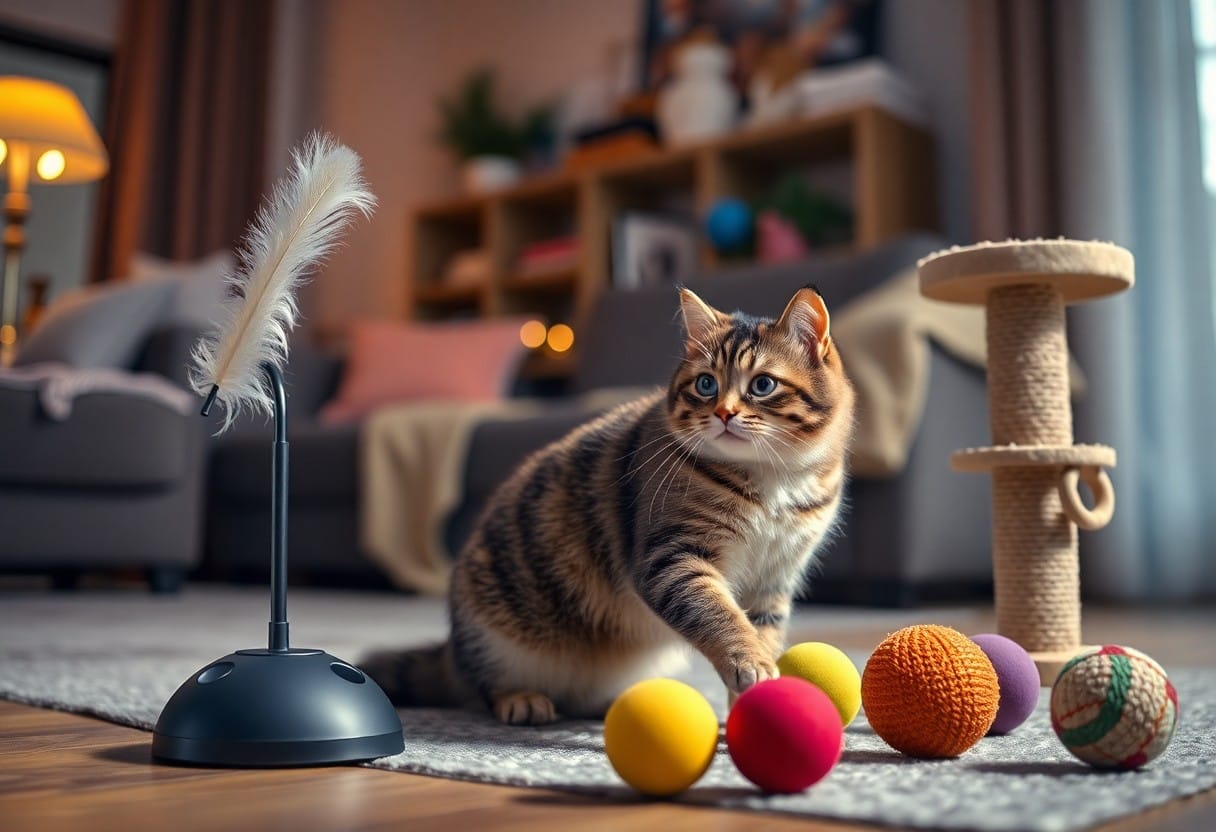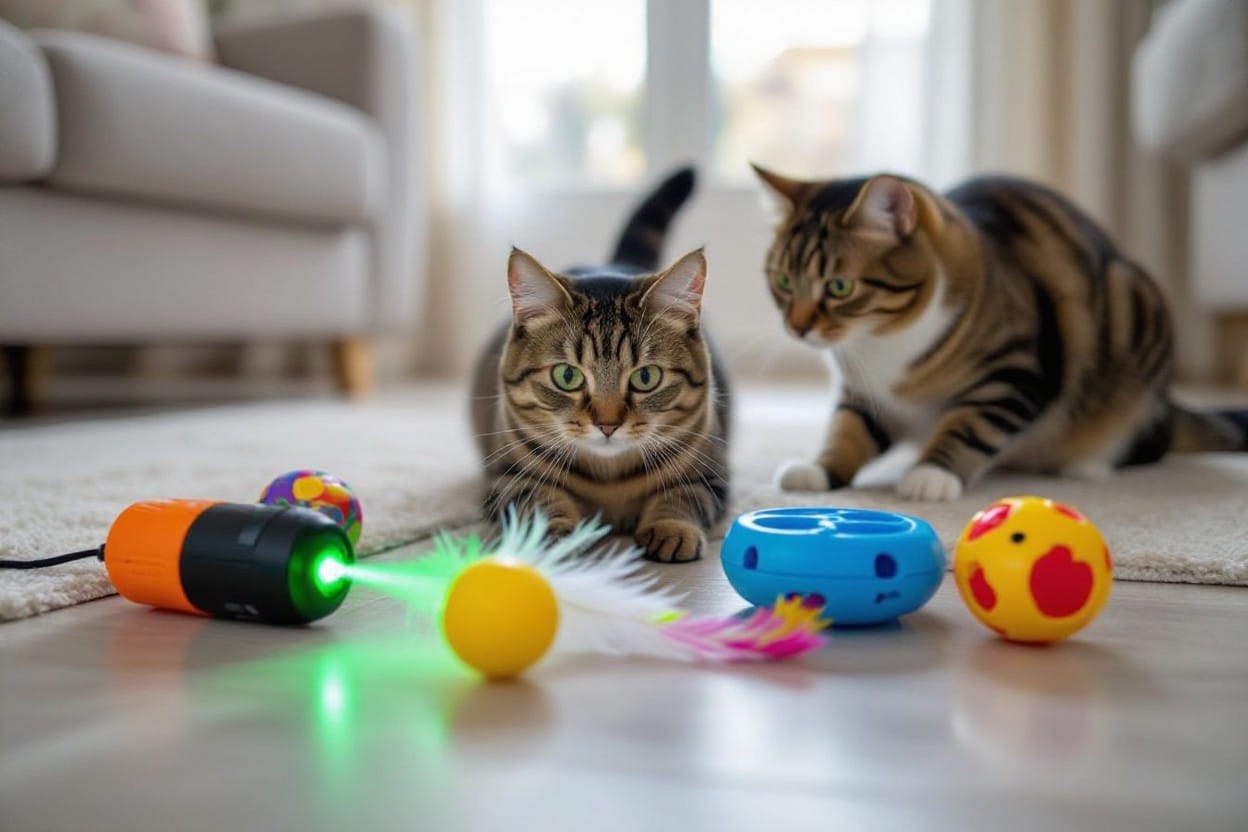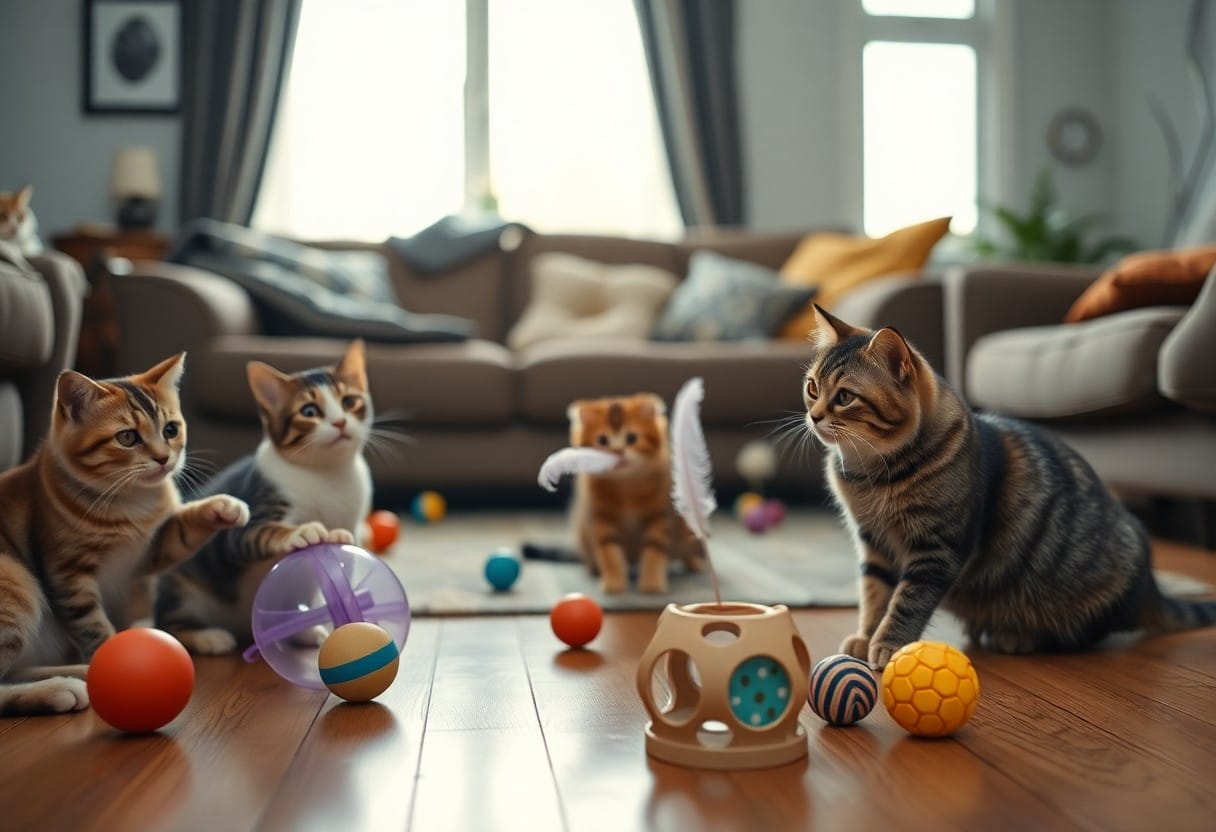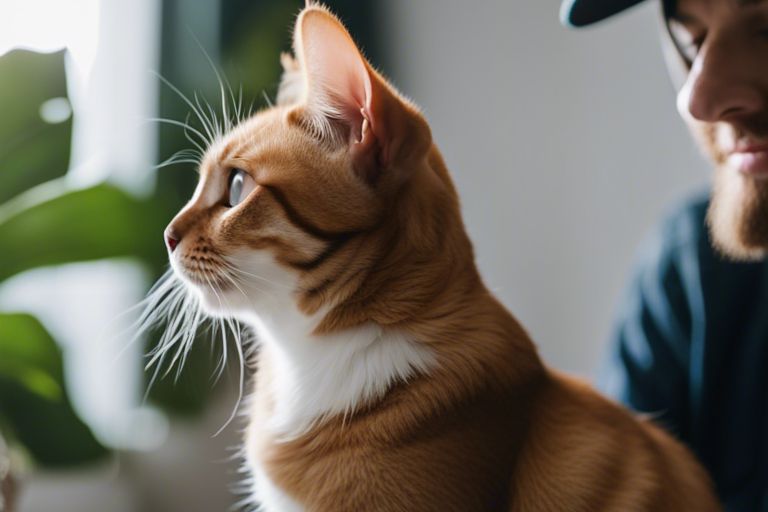Cats are mysterious creatures with a complex language of body signals and behaviors that they use to communicate with their human companions. By observing and understanding your cat’s body language, you can decode their messages and build a stronger bond with your feline friend. From tail movements to ear positions, each subtle cue reveals valuable insights into your cat’s mood and needs. This blog post will guide you through the key feline body language signals and help you decipher what your cat is trying to tell you.
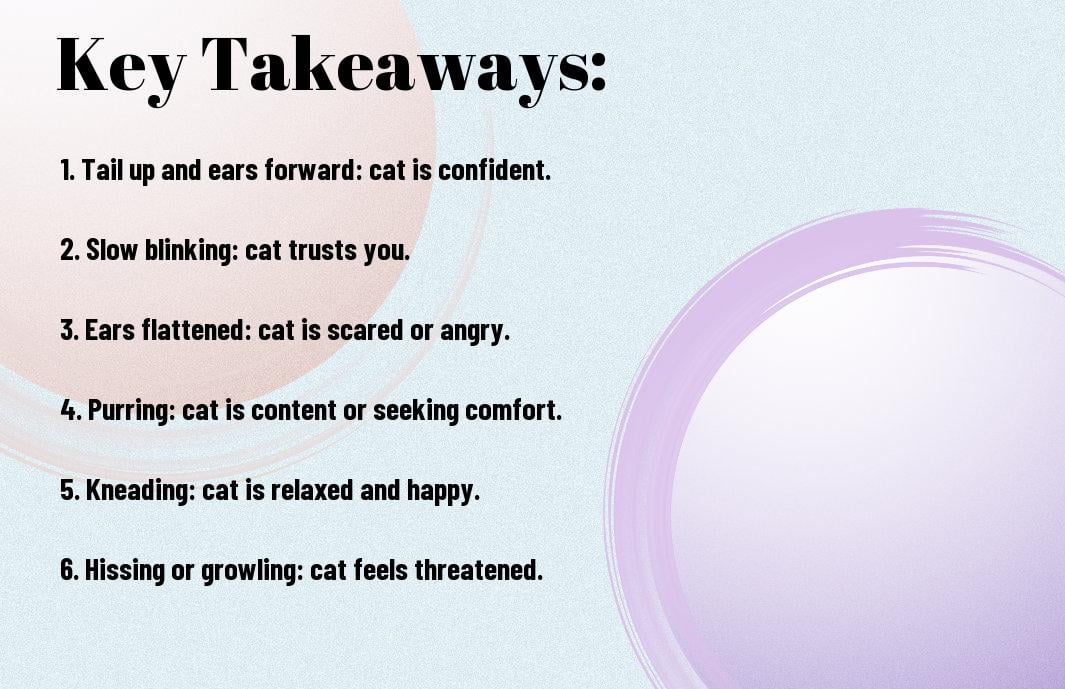
The Basics of Feline Communication
It is vital for cat owners to understand the basics of feline communication to better interpret their pet’s needs and emotions. Cats communicate through a combination of vocalizations, body language, and scent cues. By learning to recognize these signals, you can strengthen the bond with your cat and ensure a harmonious relationship.
Vocalizations and What They Mean
Vocalizations are a crucial aspect of cat communication. Cats can make a variety of sounds, each with its own meaning. For example, a purring cat is often content and relaxed, while a cat hissing or growling is showing signs of fear or aggression. Meowing can signify anything from a request for attention to hunger or discomfort. By paying attention to your cat’s vocalizations and the context in which they occur, you can better understand what your feline friend is trying to communicate.
The Role of Scent in Cat Communication
On top of vocalizations and body language, scent plays a significant role in cat communication. Cats have scent glands located in various parts of their bodies, such as their cheeks, paw pads, and tail base. Through rubbing or scratching objects, cats leave behind pheromones that convey information to other cats in the environment. This scent marking helps cats establish their territory, signal their presence, and even communicate their emotional state.
Plus, cats rely on their sense of smell to recognize familiar individuals, including their owners. This is why cats may sniff you when you come home or rub against your legs—they are gathering information about you through scent cues.
Decoding Tail Movements
Tail Position and Emotional States
States of a cat can be easily deciphered by observing the position of its tail. A tail held high indicates a happy and confident feline, while a tail tucked between the legs suggests fear or submission. A twitching tail may signal irritation or excitement, and a puffed-up tail indicates a cat that is feeling threatened or aggressive. Understanding these basic tail positions can help you better assess your cat’s emotional state.
Tail Movement Patterns and Their Interpretations
Tail movements also play a crucial role in decoding your cat’s feelings. When a cat’s tail is swishing back and forth rapidly, it may be a sign of agitation or annoyance. A slow, deliberate swish often indicates that the cat is focused or hunting. A question mark shape in the tail, where it is slightly curved at the top, can denote a playful mood. Meanwhile, a lashing tail from side to side is a clear sign of anger or hostility.
This knowledge of tail movements can provide valuable insights into your cat’s thoughts and feelings. By paying attention to your cat’s tail language, you can better understand and communicate with your feline companion.
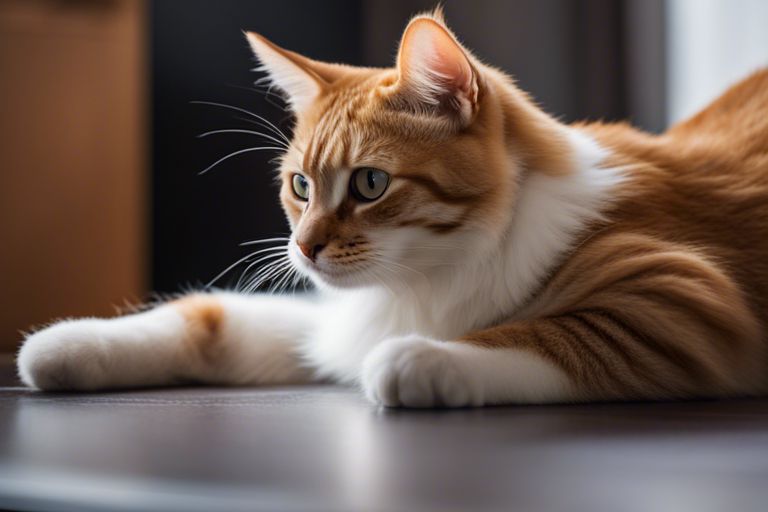
Facial Expressions and Ear Positions
Eyes: The Window to the Cat’s Mood
To understand your cat’s emotions, look into their eyes. An alert, relaxed cat will have eyes that are clear and round. Dilated pupils can indicate excitement or fear, while narrowed pupils may suggest aggression or irritation. Slow blinking is often a sign of trust and affection. If your cat’s eyes are half-closed or squinting, they may be feeling content.
Ears: Listening Beyond Sound
Mood can be gauged by observing your cat’s ears. A cat with ears facing forward is likely feeling attentive or friendly. When the ears are flattened back or to the sides, your cat may be frightened, angry, or in defensive mode. Raised, twitching ears might signal curiosity or excitement.
Eyes play a crucial role in understanding your cat’s mood and intentions, but they are not the only facial feature to observe. Each part of your cat’s face can give you valuable insight into how they are feeling.
Whiskers: Sensitive Mood Indicators
Sensitive whiskers are an necessary part of your cat’s sensory system. Pay attention to your cat’s whiskers as they can provide clues about their mood. Whiskers that are relaxed and pointing sideways indicate contentment, while whiskers pulled back suggest fear or aggression. If your cat’s whiskers are forward-facing, they may be feeling playful or curious.
For instance, when a cat is stalking prey or is about to pounce, their whiskers may move forward to help them gauge distance and space. Keeping an eye on your cat’s whiskers can give you valuable information about their current emotional state.
Body Postures and Their Meanings
The Art of the Arch: Defensive Postures
Unlike dogs, cats are known for their graceful and intricate body language. One common posture displayed by cats is the arching of the back, often accompanied by their fur standing on end. This defensive posture is a clear sign that your cat is feeling threatened or frightened, and it is a way for them to make themselves appear larger and more intimidating to potential threats. If your cat arches its back and hisses or growls, it is best to give them space and allow them to calm down on their own.
Rolling and Belly Exposure: Signs of Trust and Contentment
The sight of a cat rolling onto its back and exposing its belly can be confusing for some cat owners, as in dogs, this is often seen as an invitation for belly rubs. However, in cats, this behavior is a sign of trust and contentment. When a cat exposes its belly, it is showing that it feels safe and comfortable in its environment. It is a vulnerable position for a cat to be in, as the belly is a sensitive area, so take it as a compliment if your cat chooses to display this behavior around you.
Another way cats show trust and contentment is through slow blinking. When your cat looks at you and blinks slowly, it is a sign that they are relaxed and at ease in your presence. You can reciprocate this gesture by slowly blinking back at them, which can further strengthen the bond between you and your feline friend.
Interpreting Paws and Claws
Now, let’s investigate into the fascinating world of your cat’s paws and claws, which can provide valuable insights into their emotions and intentions. Cats use their paws not only for mobility but also for communication and self-expression, making it crucial for cat owners to understand what these movements signify.
Kneading: Affection or Comfort Seeking
One common behavior seen in cats is kneading, where they rhythmically push their paws in and out against a soft surface. This behavior is often associated with feelings of contentment, as it mimics a kitten’s instinctive behavior while nursing. Cats may knead their favorite blankets, your lap, or even your stomach as a way to show affection and seek comfort from their owners.
Sharp Retractables: Fear, Aggression, or Play
An important aspect to note is your cat’s retractable claws. When your feline friend extends their claws, it can indicate a range of emotions. If a cat’s claws are fully extended in a defensive posture, it typically signals fear or aggression. However, during playtime, cats may also extend their claws without any negative intent. Understanding the context of the behavior, such as body language and vocalizations, can help decipher whether it’s playful or aggressive behavior.
Affection:
By observing your cat’s body language holistically, including their paw movements and claw usage, you can better understand their feelings and respond accordingly. Remember to approach your cat with patience and empathy, allowing them to express themselves naturally through their paws and claws.
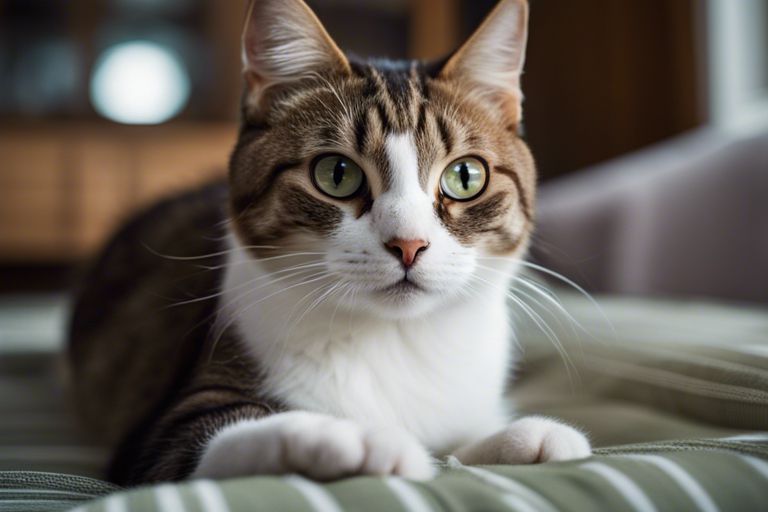
Vocal Communication: Purrs, Hisses, and Chirps
The Soothing Purr: Contentment or Pain?
Keep a keen ear out for the gentle rumbling sound of a purr emanating from your feline friend. Contrary to popular belief, a cat’s purr is not always a sign of contentment. While it is often associated with happiness and relaxation, cats may also purr when they are in pain or distress. Therefore, it is necessary to observe your cat’s body language and overall demeanor to decipher the true meaning behind their purring.
Hisses and Growls: Warning Signals
Hisses and growls are defensive vocalizations that cats use to communicate fear, aggression, or discomfort. When a cat feels threatened or cornered, they will often emit these sounds as a warning to stay away. It is crucial to respect these vocal signals and give your cat space to calm down and feel safe.
Another important aspect to consider is that hisses and growls are not always directed at humans. Cats may hiss or growl at other animals or even inanimate objects that they perceive as a threat. Understanding these warning signals can help you intervene effectively to prevent potential conflicts or aggression.
Chirps and Chatters: The Hunter’s Dialogue
To enhance your understanding of your cat’s vocal communication, pay attention to their chirps and chatters. These high-pitched sounds are typically used by cats during hunting or playtime, mimicking the sounds of prey or signaling excitement. While chirping may seem cute and endearing, it is necessary to recognize it as a form of communication that reflects your cat’s natural instincts and predatory behavior.
Understanding the nuances of your cat’s vocalizations, from purrs to hisses to chirps, can deepen your bond with your feline companion and enable you to respond appropriately to their needs and emotions.
Interaction With Humans and Other Animals
Greeting Behaviors and What They Signify
With their humans, cats may greet by rubbing against legs, head-butting, or making eye contact. These behaviors show affection and mark you as part of their territory. When meeting other animals, cats may approach with caution, keeping a safe distance, or may show curiosity by cautiously approaching and staring. Understanding these actions can help you gauge your cat’s comfort level and response to the situation.
Aggression or Affection: Understanding Social Cues
For cats, differentiating between aggression and affection can be crucial for a harmonious relationship. Dilated pupils, hissing, flattened ears, and swishing tails indicate aggression, signaling that your cat may feel threatened or uncomfortable. On the other hand, a relaxed body posture, slow blinking, purring, and kneading signify affection and contentment. It’s necessary to be attentive to these cues to respond appropriately and foster a positive interaction.
They may exhibit these behaviors towards humans or other animals, showing whether they are comfortable in the setting and with the individuals present. Learning to interpret these signals can enhance your bond with your feline friend and prevent any miscommunications that could lead to stress or conflicts.
Improving Communication With Your Cat
Responding to Your Cat’s Body Language
Your cat communicates with you through their body language, so it’s vital to pay close attention to their cues. When your cat rubs against you, it’s a sign of affection and marking you as part of their territory. By reciprocating with gentle petting or rubbing, you can strengthen your bond and show your cat that you understand and appreciate their communication. Similarly, if your cat flattens their ears or tucks their tail, it’s a sign of fear or aggression, and it’s best to give them space to calm down.
The Importance of Respect and Patience in Bonding
The key to improving communication with your cat lies in mutual respect and patience. Cats are independent creatures with their own unique personalities and preferences. It’s vital to respect their boundaries and not force interactions, as it can lead to distrust and stress. By approaching your cat with patience and allowing them to come to you on their terms, you can build a strong and trusting relationship over time.
Respect your cat’s individuality and give them the space they need to feel comfortable in your presence. By showing respect and patience in your interactions, you are creating a safe and welcoming environment for your cat to express themselves and communicate effectively with you.
Final Words
Presently, by taking the time to observe and understand your cat’s body language, you can develop a deeper bond and connection with your feline companion. Learning to recognize the various cues and signals that your cat uses to communicate will help you better meet their needs and ensure a harmonious relationship.
Note, every cat is unique, so it’s vital to pay attention to your individual cat’s body language patterns and behaviors. With patience, observation, and a bit of practice, you can become fluent in the language of your cat, strengthening your relationship and creating a more enriched and fulfilling life together.
FAQ
Q: How can I understand my cat’s body language?
A: Understanding your cat’s body language is necessary in decoding what your feline friend is trying to tell you. Pay attention to their ears, eyes, tail, and overall posture to get clues about their mood and feelings.
Q: What does it mean when my cat’s ears are flattened?
A: Flattened ears in cats often indicate fear, aggression, or discomfort. It’s crucial to give your cat space and not to approach them if you notice this body language.
Q: Why is my cat’s tail puffed up?
A: A puffed-up tail in cats is a clear sign of agitation, fear, or feeling threatened. Your cat may be trying to make themselves appear larger to intimidate a perceived threat.
Q: How can I tell if my cat is happy?
A: A cat that is happy and content will often have relaxed ears, half-closed eyes, a softly swaying tail, and a relaxed posture. Purring is also a good sign of feline happiness.
Q: What should I do if my cat shows signs of aggression in their body language?
A: If your cat displays aggressive body language such as hissing, growling, flattened ears, and a swatting tail, it’s necessary to give them space and not engage with them. Consult with a veterinarian or animal behaviorist for further guidance on managing aggression in cats.
